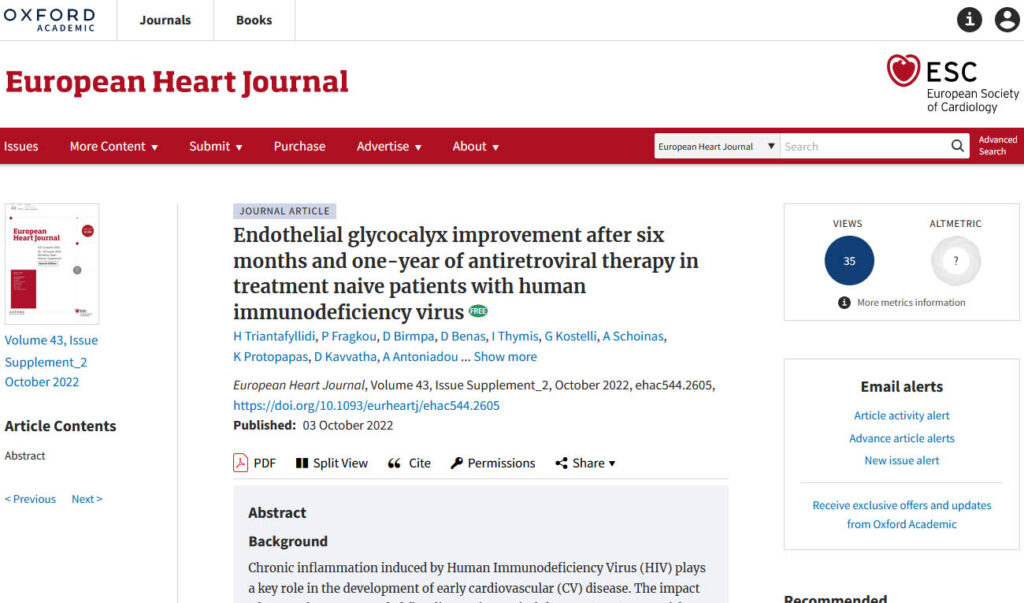Abstract
Background
Chronic inflammation induced by Human Immunodeficiency Virus (HIV) plays a key role in the development of early cardiovascular (CV) disease. The impact of currently recommended first line antiretroviral therapy (ART) on CV risk early after treatment initiation is still under investigation. We aimed to explore any treatment-induced changes in endothelial function through endothelial glycocalyx measurement (EG) in treatment naïve HIV patients’ one year post HIV treatment initiation by different ART agents.
Methods
We estimated endothelial function by endothelial glycocalyx integrity measurement in 58 recently diagnosed and treatment naïve HIV patients (mean age=38+10 years, 91% males, 61% smokers) at baseline and at 1-year post ART initiation (integrase or protease inhibitors). Increased perfusion boundary region (PBR) of the sublingual arterial microvessels (ranged from 5–25 micrometers) using Sideview Darkfield imaging (Microscan, Glycocheck) was measured as a non-invasive accurate index of reduced EG thickness.
Results
From a total population of 54 HIV patients, 35 patients were randomly treated by the newer integrase inhibitor Dolutegravir (Group A, mean age = 37±10 years, 89% males, 54% smokers) while 22 patients by the older protease inhibitor Darunavir/Cobicistat (Group B, mean age = 38±10 years, 95% males, 74% smokers). No differences were found between groups regarding age, weight, lipid profile (LDL-C, HDL-C, triglycerides), office (SBP, DBP) and central (cBP) blood pressure. We found that weight (76±14 vs. 81±16 kg, p<0.001), SBP (125±12 vs. 130±14 mmHg, p=0.003) and cBP (116±12 vs. 121±12 mmHg, p=0.001) were increased in the entire HIV population, at 1 year post-treatment. At 6 months evaluation, PBR5–25 was decreased in the entire HIV population and Group A (2.18±0.3 μm vs. 2.05±0.3 μm, p=0.01 and 2.19±0.3 μm vs. 2.02±0.3 μm, p=0.02, respectively). However, at 1-year post treatment evaluation, PBR5–25 was decreased in all groups, total HIV population, Group A and Group B (2.18±0.3 μm vs. 1.96±0.3 μm, p<0.001, 2.19±0.3 μm vs. 1.93±0.3 μm, p=0.003 and 2.17±0.3 vs. 1.99±0.3, p=0.04, respectively).
Conclusions
Endothelial function, estimated by endothelial glycocalyx integrity, is improved in newly diagnosed and treatment naïve HIV patients, evaluated at 6 and 12 months post-treatment initiation by integrase or protease inhibitors despite weight and blood pressure increase.


